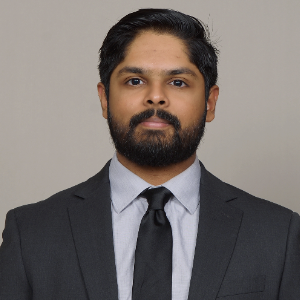Title : Isolated renal failure without respiratory failure: Severe rhabdomyolysis as a rare presentation of COVID-19, a case series
Abstract:
Introduction:
The SARS-Cov-2 virus is classically associated with respiratory tract infections. Here we present two rare cases of isolated renal failure resulting from severe rhabdomyolysis due to COVID-19, in the absence of respiratory symptoms.
Case 1:
A 40-year-old African American male with no past medical history presented after he noticed “purple” urine, decreased urine output, and leg edema. This was preceded by 3 days of myalgia and chills. The patient was unvaccinated for COVID-19 and admission COVID-19 viral PCR was positive. He had a negative chest x-ray (CXR) and no respiratory symptoms. Labs revealed BUN 111, Creatinine >28 and Creatinine Kinase (CK) >144,000. The patient became anuric and developed worsening hyperkalemia despite fluid resuscitation requiring initiation of renal replacement therapy (RRT) on hospital day 2. After 16 days of hemodialysis, his CK improved, and he started making urine. The patient was liberated from hemodialysis and was discharged with creatinine at a nadir of 4.4.
Case 2:
A 28-year-old African American male, unvaccinated for COVID-19, with no past medical history presented with 4 days of myalgia after developing “red” urine. He was positive for COVID-19 on viral PCR, with negative CXR. Initial labs revealed BUN 42, Creatinine 4.5 and CK >144,000, with oliguria. On hospital day 4, his urine output remained <0.1 cc/kg/hour and he developed hyperkalemia despite aggressive fluid resuscitation. Hemodialysis was initiated. He then underwent a quadriceps muscle biopsy, which revealed scattered necrotic myofibers without lymphocytic infiltration, consistent with necrotizing myopathy. He continued hemodialysis and symptomatically improved without pharmacologic intervention. Ultimately was discharged on hospital day 12 with plans for hemodialysis weaning as an outpatient.
Discussion:
COVID-19 frequently results in respiratory infections; however, as cases have accumulated, reports of alternative primary organ involvement have emerged. Current literature reports a prevalence of rhabdomyolysis between 2-17% in patients hospitalized with COVID-19. The vast majority of reported cases occurred concurrently with respiratory failure or were attributable to medication toxicity, with very rare reports of rhabdomyolysis severe enough to necessitate RRT. Both of our cases are unique due to the severity of rhabdomyolysis, with elevations in CK to >144,000, as compared to the average CK of 3000-6000 reported in current literature. These cases are made even rarer by renal failure requiring RRT and the absence of respiratory findings. How COVID-19 causes rhabdomyolysis is poorly understood, but may be attributed myositis from direct viral toxicity or from immune-mediated cytokines.
Although not performed in our first case, our second patient underwent muscle biopsy revealing necrotizing myopathy, consistent with biopsies in other reported cases of COVID-19 induced myopathy. Notably, in both our cases, the patients were unvaccinated at the time of presentation, potentially contributing to the severity of their presentation. Both patients received hemodialysis with no other intervention and clinically improved, with one patient even liberated from RRT before discharge.
Though rare, rhabdomyolysis should be considered in all patients with COVID-19 presenting with myalgia, dark colored urine, or unexplained changes in renal function. We recommend routinely screening these patients with CK and urinalysis.



